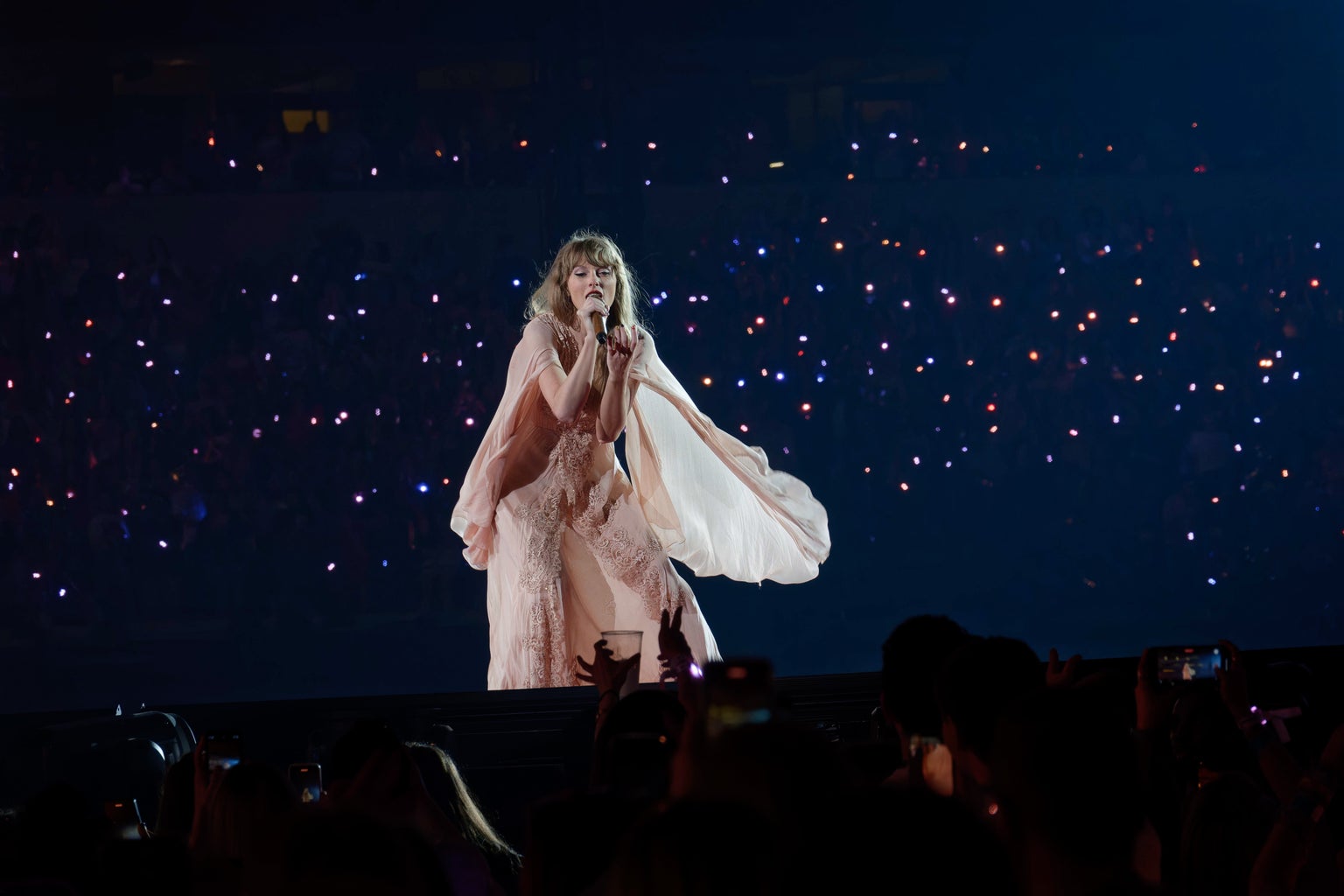Taylor Swift is considered one of the biggest artists of our time. With a 17-year career, she fills stadiums around the world with her current tour, called The Eras Tour, which breaks records with each release, accumulates various awards, and is often at the top of the charts with her songs. But in 2022, the singer began to top a not-so-positive list: that of celebrities who emit the most carbon dioxide into the atmosphere due to the frequent use of private jets.
The list was released by Yard, a sustainable marketing company, and exposed the top 10 celebrities who took the most private flights that year, with Taylor Swift surprising the public with 8,293.54 tons of CO2 emitted on 170 flights in just 7 months.
To understand the impact of these numbers, an average person produces around 4.3 tons of carbon per year. This means that the pollution caused by just Taylor’s jet in less than a year is 1,184 times greater than the annual emission of an average citizen.
Understandably, an artist of Taylor’s magnitude may not be able to travel on commercial flights, but some short-distance trips are questioned by the company that released the data. Especially those made for the singer to attend the American football games of her current boyfriend, Travis Kelce. The shortest recorded flight of the singer was 36 minutes, from Missouri to Nashville, in the United States.
Taylor’s team spoke to Rolling Stone magazine, claiming that not all trips were taken by the artist herself, as the jet is regularly loaned to other people.
What is the major issue with high CO2 emissions?
In 2023 alone, the planet set records for sea level rise, ocean heat, surface temperatures, and also for the increase in the burning of fossil fuels, the main driver of global warming.
The atmosphere accumulates emitted greenhouse gases (carbon gases, methane, nitrous oxide), causing the sun’s heat to be trapped without being able to escape back into space. This retention is responsible for the climate imbalance, excessively raising temperatures. As a consequence of the increasing emissions, the previous year was the hottest ever recorded, breaking numerous records for daily, monthly, and annual temperature peaks.
During her tour in Brazil, Taylor Swift experienced one of the hottest days of the year in the country, including having one of her shows in the state of Rio de Janeiro marked by a heat index of 60ºC and numerous incidents with fans caused by the heat.
Carbon credits?
After the criticism prompted by Yard’s list, Swift’s team told Business Insider that the singer had worked to reduce the carbon footprint of her tours. “Before the tour kicked off in March of 2023, Taylor purchased more than double the carbon credits needed to offset all tour travel”, her representative said.
A carbon credit is an attempt to reverse the damage caused by gases. The buyer of the credit pays an institution/entity to engage in activities like reforestation, renewable energy production, greenhouse gas capture, or improvements in energy efficiency. Each credit corresponds to 1 ton of carbon, thus compensating for the customer’s emissions footprint.
The carbon credit market has many advantages, such as encouraging companies to reduce polluting actions, stimulating investment in sustainable projects, and working on ecological compensation against emission effects. However, it also presents some disadvantages, such as the complexity of managing these sales, ghost credits, and frauds that falsify sustainable compensatory actions or the number of emissions.
The legitimacy of the credits must be proven by the corporations that sell them, and the certificate of purchase can only be obtained by the buyer when the company verifies the sustainable project, which undergoes verification by third-party entities.
So, is Taylor Swift responsible for the end of the world?
It’s not. Due to the artist’s fame, it’s customary for the public to correlate all responsibility to Taylor. After all, when we think of the “Taylor Swift” brand, we immediately remember the blonde with her guitar.
But it can be difficult to think of Carlos Slim, one of Mexico’s richest billionaires, who emitted almost 8 million tons of carbon dioxide in 1 year – Yes! On average, 1,000 times more than Taylor’s jet.
It seems complicated to remember the owner of Chelsea Football Club, Roman Abramovich, who besides owning one of the largest yachts in the world (also one of the most polluting), still amassed his fortune from investments in Evraz, a steel producer, and Norilsk Nickel, a mining company, meaning the fortune that bought the yacht was created through polluting actions, and the emissions from the yacht itself are extremely harmful to the environment.
Emissions from celebrities are excessive, but it’s important to emphasize the power of billionaires in driving billions in industries with highly polluting measures without being properly penalized. According to an Oxfam study, pollution from the world’s richest sectors will cause 1.3 million heat-related deaths by 2030.
The true victims
Inequality condemns the most vulnerable in all social sectors. The article Climate Inequality: A Planet for the 99% demonstrates the disparity in emissions between the small wealthiest fraction and the poorest. “The super-rich are looting and polluting the planet to the point of destruction, leaving humanity choking on extreme heat, floods, and droughts”, says Amitabh Behar, director of Oxfam.
For an average citizen to emit the same amount of carbon that Taylor Swift emitted in seven months, it would take almost 35 years. For this same citizen to emit the same amount of CO2 as Jeff Bezos, Carlos Slim, and Roman Abramovich emitted in 1 year, it would take at least 1,500 years.
In sustainability commercials, the recommendation is for the population to make an effort to use public transportation, reduce meat consumption, and try to consume only local businesses, all so that the top 1% of the world’s richest can continue to make a fortune from pollution.
—————————————————————–
The article above was edited by Fernanda Miki Tsukase.
Liked this type of content? Check Her Campus Cásper Líbero home page for more!



